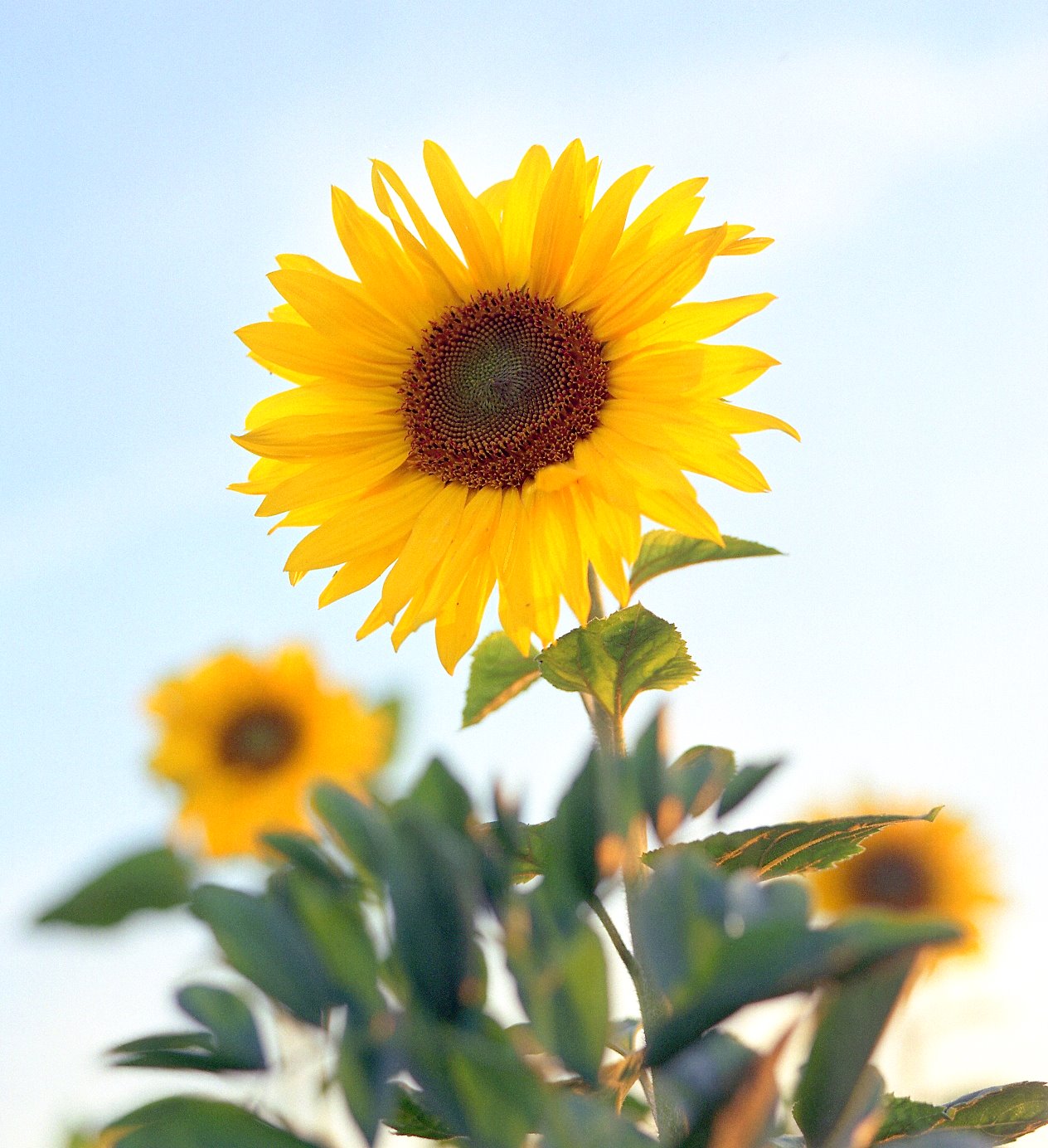Sunflower: Story of this summer goddess begins with search for love

COLUMBIA, Mo — The sunflower’s story begins with a tale of unrequited love.
According to Greek mythology, the water nymph Clytie fell in love with the god of the sun, Apollo, who dazzled the earth as he drove his golden chariot across the sky each day. When he rejected Clytie’s affection, it nearly drove her mad. She spent days without food or water as she searched the heavens and waited for Apollo to appear.
“In the end, she was transformed into a sunflower, a plant which turns its face toward the sun as it moves across the sky each day,” said University of Missouri horticulturist David Trinklein in a press release.
Young sunflowers actually search the heavens for light for photosynthesis in a process called heliotropism, Trinklein said. The sunflower’s internal (circadian) clock acts on growth hormones that cause cells on different sides of the plant’s stems to enlarge or contract. Older sunflowers mainly face east, warming themselves early in the day to attract pollinators.
This tough, carefree flower will bring smiles to the faces of even novice gardeners and children, Trinklein said. Its head of tightly packed clusters of small, tubular disc florets produce seeds. The surrounding ray florets, often incorrectly referred to as petals, attract pollinators.
Native Americans grew sunflowers for their edible, nutrient-rich seeds. Sunflowers made their way to Europe in the early 16th century. Russians soon developed a thriving sunflower oil industry. American farmers produce nearly 3 billion pounds of sunflower seeds yearly.
Recently, sunflower has been the subject of breeding efforts aimed at making it a more attractive garden flower and cut flower. This has resulted in the introduction of a number of new varieties which are shorter and more free-flowering.
“A good example is the variety ‘Soraya,’ the first sunflower to win the coveted All-American Selection designation,” Trinklein said. It produces four to six eye-catching blooms per stem on plants that reach a mature height of about 5 feet.
Another recent AAS winner is “Suntastic,” a dwarf sunflower that, unlike other varieties, produces new flowers all summer long, he said.
Trinklein shared several other facts about these beacons of summer:
- Not all sunflowers are created equal. Single-stem sunflowers do best in high-density plantings and produce consistently on tall stems. Plant throughout the season for continuous blooms. Branching varieties produce flowers on multiple shorter stems that bloom all season.
- In 1987, Vincent van Gogh’s “Still Life: Vase With Fifteen Sunflowers” sold to an anonymous buyer for $39.9 million, a record at the time.
- Harvest cut flowers early in the morning before plants become heat-stressed. For fun, immerse cut stems in vases and add food coloring.
- Not all sunflowers are pollinating. Breeders have created pollenless varieties that enjoy a longer blooming season. Check seed packages for classification. Choose a full-sun location for planting. The sunflower’s deep taproot prefers a well-drained, loose garden loam. Sow seeds ¼ to ½ inch deep and space 6 inches apart. Thin to 24 inches when established.
Sunflowers contain a compound that is toxic to neighboring species.
Photo:
https://commons.wikimedia.org/wiki/File:A_Sunflower.jpg
Sunflower. Photo by T. Voekler, CC BY-SA 3.0 (https://creativecommons.org/licenses/by-sa/3.0), via Wikimedia Commons.
Miss Clipping Out Stories to Save for Later?
Click the Purchase Story button below to order a print of this story. We will print it for you on matte photo paper to keep forever.

